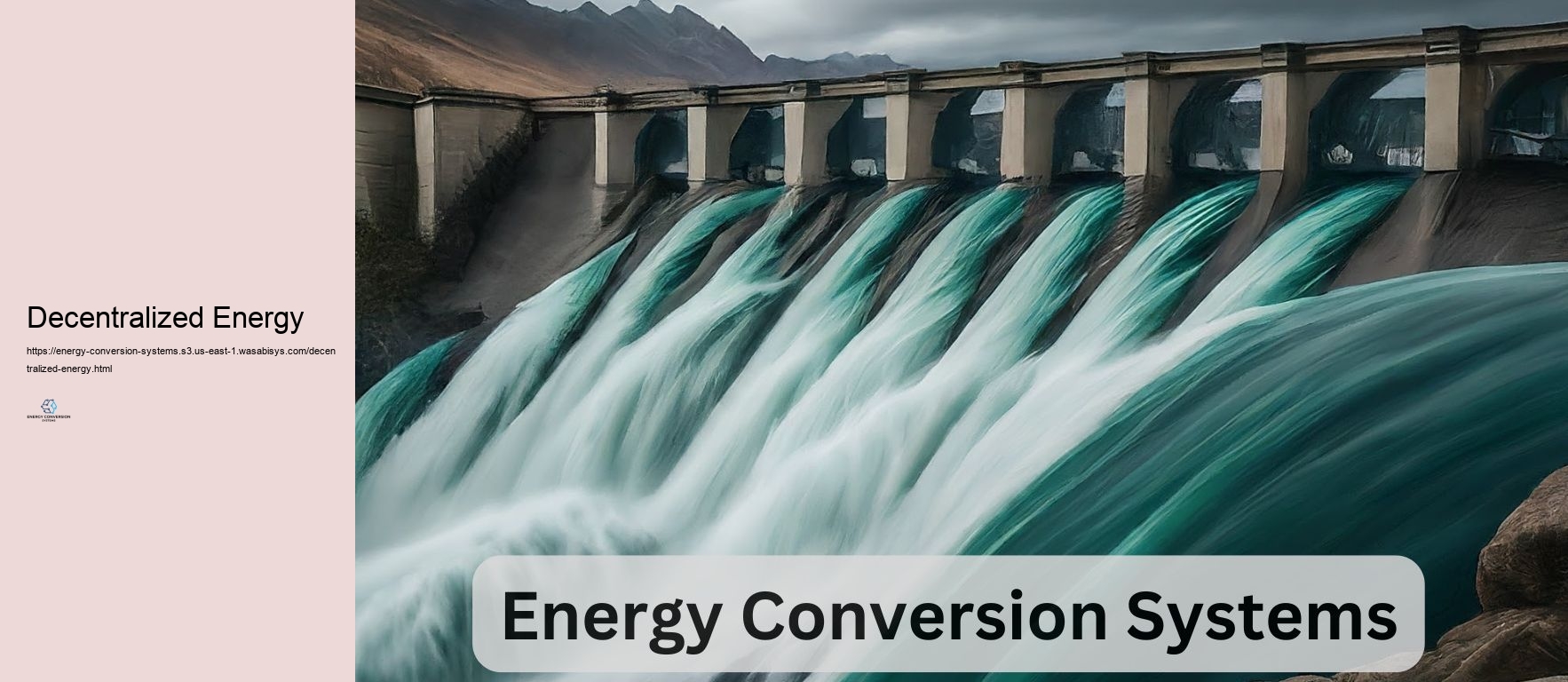

Energy conversion systems play a crucial role in contemporary culture, enabling the enhancement of numerous types of energy right into better and useful kinds. These systems are crucial to power generation, transport, industrial procedures, and daily technologies. Understanding the principles and applications of energy conversion systems is required for designers, policymakers, and any person considering the field of energy. At its core, energy conversion is regulated by the legislations of thermodynamics. The very initially guideline of thermodynamics, which states that energy can not be generated or harmed yet only transformed from one kind to another, is the foundation of all energy conversion systems. The 2nd regulations presents the concept of decrease and effectiveness, making clear why no energy conversion procedure can be 100% effective. These necessary principles underpin the design and operation of all energy conversion systems. Among one of one of the most common and significant energy conversion systems is the thermal power plant. These centers transform the chemical energy saved in nonrenewable fuel sources (such as coal, oil, or gas) or nuclear gas right into electric energy. The process normally includes melting the gas to cozy water, generating vapor that drives a generator attached to a generator. This system, based upon the Rankine cycle, is an archetype of converting thermal energy to power and afterwards to electrical energy. Modern thermal nuclear reactor use different techniques to enhance efficiency, such as supercritical vapor issues and combined cycle systems. Renewable resource systems represent one more important classification of energy conversion. Solar solar (PV) panels change light energy right right into electric energy with the photoelectric impact. Wind wind turbines transform the kinetic energy of relocating air right into power and after that into electric power. Decentralized Energy Hydroelectric nuclear power plant harness the potential energy of water conserved at altitude, transforming it to power with wind turbines and after that to electric energy. Each of these systems has its distinct principles and difficulties, yet all satisfy of changing naturally happening energy right into even more useful kinds. Inner shedding engines, extensively used in transportation and some power generation applications, transform the chemical energy in gas right into power through managed explosions. These engines, whether gas or diesel, operate thermodynamic cycles (such as the Otto cycle or Diesel cycle) that include compression, burning, advancement, and exhaust stages. The effectiveness of these engines has really been continually boosted via advancements in materials, gas injection systems, and exhaust gas treatment modern technologies. Gas cells stand for an advanced energy conversion system that straight transforms chemical energy right into electric energy without combustion. These devices take advantage of electrochemical responses to produce electrical power, with hydrogen being a regular fuel. Gas cells have applications varying from mobile source of power to substantial stationary power generation, and they supply the possibility for high effectiveness and low discharges. Heatpump and refrigeration systems are energy conversion systems that relocate warmth from one area to an additional, successfully transforming electrical energy right into thermal energy transfer. These systems, which operate the vapor compression cycle or absorption cycle, are commonly made use of for home heating, cooling down, and refrigeration in household, service, and commercial configurations. The performance of heatpump is normally revealed as a coefficient of effectiveness (POLICE), which can be more than one, as they move heat in contrast to generate it straight. Electrochemical energy conversion systems, such as batteries and supercapacitors, play a crucial responsibility in energy storage area and mobile power applications. These devices convert chemical energy right into electric energy (throughout discharge) and the other way around (throughout billing). The principles of electrochemistry govern their treatment, with ongoing research focusing on enhancing energy density, power thickness, and cycle life. Thermoelectric gizmos stand for an unique kind of energy conversion, directly transforming temperature level distinctions right into electrical energy (Seebeck effect) or taking advantage of electrical energy to develop a temperature level distinction (Peltier influence). While presently limited in efficiency, these solid-state tools have applications in waste warmth healing, cooling off systems, and area expedition. Magnetohydrodynamic (MHD) generators are a sophisticated energy conversion system that straight converts thermal energy into electric energy without transferring elements. By passing a high-temperature, electrically conductive fluid via a magnetic field, these systems develop electric energy. While still greatly speculative, MHD generators hold guarantee for high-temperature, high-efficiency power generation.
Energy conversion modern technologies go to the forefront of changing just how we harness and take advantage of energy, playing a crucial duty in the change in the direction of lasting and reliable energy systems. From photovoltaics to gas cells, these contemporary innovations consist of a varied range of gadgets that transform all-natural energy resources into useful kinds, such as electrical energy, warm, and gas. Each innovation operates on distinctive principles and is in shape to particular applications, supplying special benefits and challenges. Comprehending these modern-day technologies is essential for proceeding energy solutions that handle international energy demands while decreasing ecological effect. Photovoltaics (PV) represent one of among the most widely recognized kinds of solar energy conversion. These systems make use of semiconductor products, commonly silicon, to convert sunshine directly right into power using the solar or pv result. When sunshine strikes the surface area of a PV cell, it thrills electrons, producing an electrical existing. Solar modern technology has evolved considerably for several years, with advancements in items and layout triggering raised performance and lowered expenditures. Emerging technologies, such as thin-film solar cells and organic photovoltaics, are pressing the limits of performance and versatility, making solar energy much more obtainable and versatile to countless applications, from residential rooftops to large solar ranches. Focused solar power (CSP) is one more solar power conversion contemporary technology that varies from photovoltaics by using mirrors or lenses to focus sunlight onto a tiny place, normally a receiver. The focused light is traded warmth, which is after that used to produce vapor that drives a wind turbine connected to an electric generator. CSP systems are specifically trustworthy in areas with high directly sunlight and can incorporate thermal energy storage room alternatives to supply power even when the sunlight is not radiating. This capability to shop energy as heat makes it possible for CSP plants to supply an additional secure and reputable power result contrasted to typical solar PV systems. Gas cells are a flexible energy conversion innovation that develops electrical energy with an electrochemical response, typically involving hydrogen and oxygen. Unlike combustion-based power generation, fuel cells generate power without burning fuel, causing reduced discharges and greater efficiency. There are a number of type of gas cells, each distinguished by the electrolyte used and the operating temperature level range. Polymer electrolyte membrane layer (PEM) gas cells, for example, are understood for their high power density and are frequently used in transport applications, such as gas cell vehicles. Strong oxide gas cells (SOFCs), on the other hand, run at better temperatures and appropriate for stationary power generation and industrial applications.
Energy conversion systems are essential to modern society, playing an important role in transforming raw energy resources right into useful power that gas homes, industries, and transportation. These systems encompass a huge variety of technologies and procedures designed to transform energy from one form to an additional, such as transforming chemical energy in gas to power in engines or electrical energy in power plants. A thorough evaluation of the essential elements in energy conversion systems reveals the intricacy and course associated with effectively using and utilizing energy resources. Understanding these elements is crucial for improving performance, enhancing effectiveness, and decreasing environmental influence. The starting element of any energy conversion system is the energy resource, which can be sustainable or non-renewable. Renewable resource sources include solar, wind, hydroelectric, geothermal, and biomass, while non-renewable resources incorporate fossil fuels like coal, oil, and gas, along with nuclear energy. The option of energy resource considerably affects the design and procedure of the conversion system, as each resource has unique features, such as timetable, energy thickness, and environmental result. For instance, solar power systems rely upon solar cells or solar thermal enthusiasts to catch sunlight, while fossil fuel-based systems make use of melting treatments to launch energy kept in chemical bonds. At the heart of any type of type of energy conversion system is the energy conversion tool, which adjustments the key energy resource right into a various kind of energy. Typical conversion gizmos include wind generators, engines, generators, and gas cells. Energy Harvesting Devices Turbines, utilized in both nonrenewable gas source and renewable resource systems, convert kinetic energy from vapor, water, or wind right into power, which is after that altered right into electric energy by generators. Interior shedding engines, prevalent in transportation, convert chemical energy from fuels into mechanical energy with taken care of surges. Gas cells, on the various other hand, right transform chemical energy from hydrogen or numerous other gas right into electric energy via electrochemical reactions, using high efficiency and decreased wears down. Heat exchangers are critical parts in many energy conversion systems, specifically those consisting of thermal treatments. These devices promote the transfer of warm between two or a lot more liquids without mixing them, improving the effectiveness of energy conversion. In nuclear power plant, warm exchangers are utilized to step warmth from burning gases to water, generating heavy steam that drives generators. In heating and cooling down systems, they move heat in between interior and outside setups, controling temperature and enhancing energy efficiency. The design and material choice for warmth exchangers are important for optimizing cozy transfer prices and reducing energy losses. Control systems are essential for the safe and trusted operation of energy conversion systems. They monitor and control various specifications, such as temperature degree, stress, circulation rate, and voltage, making sure that the system runs within specified restrictions and responds correctly to adjustments prominent or operating problems. Advanced control systems make use of sensors, actuators, and formulas to maximize efficiency, boost reliability, and decrease energy usage. In contemporary nuclear reactor, electronic control systems make it feasible for real-time tracking and automation, allowing motorists to make data-driven choices and apply preparing for upkeep methods. Energy storage components are gradually crucial in energy conversion systems, specifically those counting on periodic environment-friendly sources like solar and wind. Storage area systems, such as batteries, flywheels, and pumped hydro storage room, store excess energy developed throughout periods of decreased need and launch it when demand is high, making sure a secure and reputable power supply. The mix of energy storage area increases the adaptability and resilience of energy systems, making it feasible for far better tons management and decreasing dependence on fossil fuel-based back-up power. The growth of ingenious storage developments, such as lithium-ion and solid-state batteries, remains to drive improvements in energy thickness, efficiency, and cost-effectiveness. As soon as energy is exchanged a helpful kind, it ought to be sent out and dispersed to end-users. Transmission and circulation systems make up a network of transformers, high-voltage line, substations, and distribution lines that supply power from nuclear power plant to homes, organizations, and markets. Trustworthy transmission and distribution are vital for reducing energy losses and making sure a relied on power supply. Advancements such as high-voltage right existing (HVDC) transmission and wise grid advancements are boosting the efficiency, ability, and stability of electric energy networks, helping in the combination of renewable energy sources and enhancing grid monitoring. Environmental protection systems are necessary to energy conversion systems, specifically those including shedding procedures. These systems are produced to decrease the environmental impact of energy conversion by reducing discharges of contaminants such as sulfur dioxide, nitrogen oxides, bit problem, and co2. Technologies such as scrubbers, critical catalytic reduction (SCR), and carbon capture and storage (CCS) are employed to capture and manage discharges prior to they are released right into the environment. The application of environmental management systems is vital for conformity with ecological guidelines and for alleviating the impact of energy conversion on air top quality and climate alteration. Improving the efficiency of energy conversion systems is a crucial emphasis for lowering energy use and ecological influence. Effectiveness improvements can be achieved via numerous methods, such as optimizing the layout and procedure of conversion devices, applying ingenious products and finishings, and including waste warmth healing systems. Consolidated cycle nuclear power plant, which use both gas and vapor turbines, exhibit performance enhancements by capturing and using waste warmth from gas wind generators to create added electrical power. Recurring {research and development initiatives remain to have a look at new products, innovations, and procedures that can much better boost the performance and sustainability of energy conversion systems. The vital components of energy conversion systems are integral to changing raw energy resources right into functional power effectively and sustainably. By recognizing and improving these components, we can improve the performance, honesty, and environmental compatibility of energy systems, meeting the expanding requirement for tidy and effective energy solutions. As technical advancements continue to be to develop, the opportunity for development in energy conversion systems keeps considerable, using possibilities to attend to the problems of energy security and safety, atmosphere adjustment, and lasting growth.
Discover the latest advancements in energy conversion systems, from solar and wind to fuel cells and biomass! Learn how these innovations are driving sustainable energy solutions for a cleaner, more efficient future.https://t.co/9SfMjPHIu9
— Turbine Training And Operation (@turbinetraine) August 25, 2024
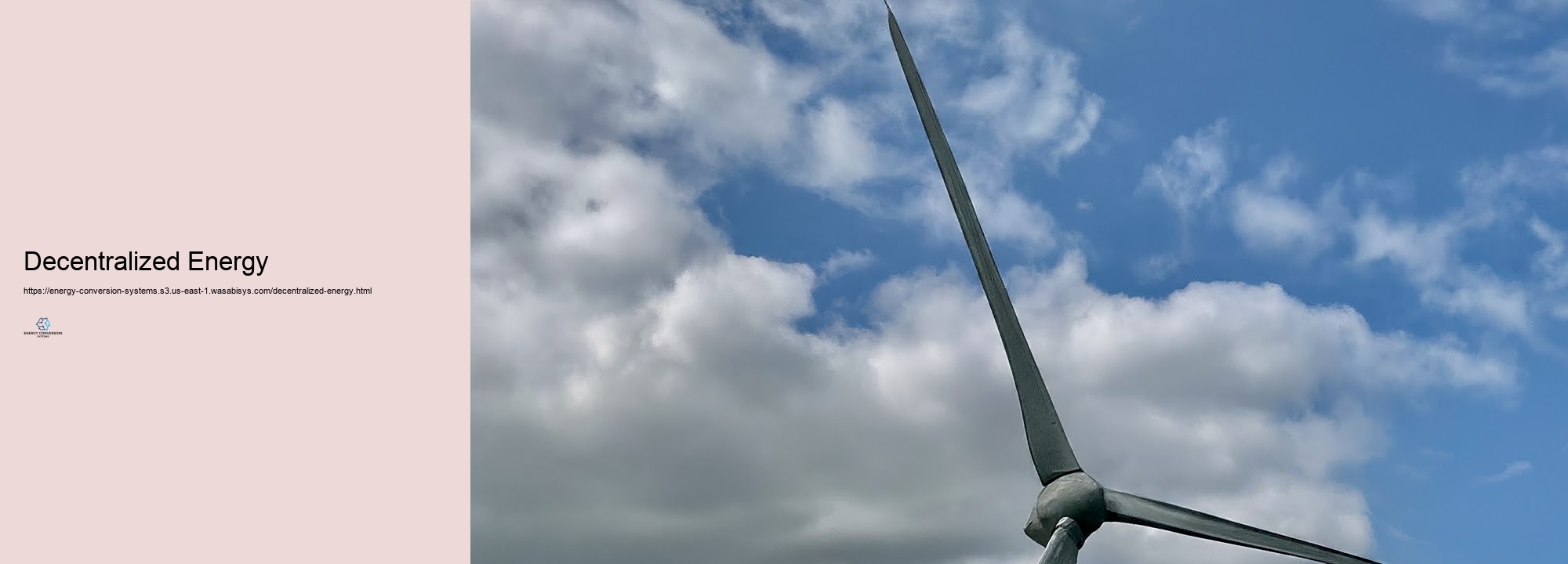

Improving performance in energy conversion is an important objective in the search of lasting and cost-effective energy manufacturing. As worldwide energy demand remains to boost, increasing the performance of energy conversion processes has become significantly essential for reducing resource consumption, reducing ecological effects, and guaranteeing energy security and security. This undertaking includes a vast array of strategies and advancements across numerous energy sectors, from typical fossil fuel-based systems to renewable resource modern innovations. Among the main locations of focus for boosting energy conversion efficiency is in thermal nuclear reactor, which remain a significant source of power worldwide. Advanced burning contemporary innovations, such as supercritical and ultra-supercritical steam cycles, have really been established to boost the efficiency of coal-fired nuclear reactor. These systems operate at higher temperature level levels and tension than standard plants, permitting much better thermal performance and decreased gas consumption. In a similar way, consolidated cycle gas generator (CCGT) plants, which use both gas and heavy steam wind generators, can achieve efficiency of up to 60%, substantially more than standard single-cycle plants. Waste heat healing systems stand for one more crucial technique for improving energy conversion performance. In great deals of industrial procedures and power generation systems, a significant quantity of warm is shed to the establishing. By applying modern-day technologies such as natural Rankine cycles (ORC) or thermoelectric generators, this waste cozy can be captured and traded beneficial electrical power. This not just improves total system efficiency but additionally reductions the requirement for included energy input, resulting in expense savings and reduced ecological impact. In the world of renewable energy, consistent innovations are driving improvements in energy conversion performance. For solar photovoltaic or pv (PV) systems, innovations in cell style and materials have caused steady boosts in conversion performance. Multi-junction cells, which use several layers of semiconductor products to document different portions of the solar array, have achieved efficiencies going beyond 40% in research laboratory arrangements. Emerging technologies such as perovskite solar cells show promise for added performance improvements and rate reductions in solar power conversion. Wind energy conversion has similarly seen substantial performance restorations through technical advancements. Larger wind turbine measurements, advanced blade designs, and enhanced control systems have increased the capability facet of wind ranches. Furthermore, the advancement of overseas wind technology has in fact opened up brand-new opportunities for harnessing extra powerful and a lot more continuous wind resources, even more enhancing energy conversion effectiveness. In the field of energy storage space, which is vital for handling the intermittency of renewable energy resources, various techniques are being pursued to enhance performance. Advanced battery technologies, such as solid-state batteries and flow batteries, deal the possibility for higher energy thickness, quicker billing rates, and much longer lifespans contrasted to common lithium-ion batteries. These remodellings can lead to far more efficient energy storage space and circulation systems, reducing losses in the energy conversion chain. Hydrogen manufacturing and gas cell technologies stand for another location of technology in energy conversion efficiency. Inverters While conventional hydrogen production with heavy steam methane changing is reasonably ineffective, brand-new approaches such as high-temperature electrolysis and solar thermochemical water splitting show guarantee for a lot more effective hydrogen manufacturing. On the usage side, innovations in gas cell modern-day innovation, particularly in proton exchange membrane (PEM) gas cells, are enhancing the performance of transforming hydrogen right into electric energy for different applications, including transport and repaired power generation. The idea of cogeneration, or mixed warm and power (CHP), is an essential strategy for improving overall energy conversion performance. By at the same time creating electric energy and valuable warmth from a single gas resource, CHP systems can achieve basic performances of around 80%, dramatically higher than different heat and power generation. This method is particularly reliable in commercial setups and area heater, where there is a normal requirement for both electrical energy and warmth. Improvements in products clinical research are playing an essential responsibility in improving energy conversion performance throughout many contemporary technologies. High-temperature superconductors, as an example, have the possible to significantly minimize energy losses in power transmission and circulation systems. Similarly, the development of innovative items for generator blades, solar batteries, and gas cells is making it possible for higher running temperatures, enhanced long life, and increased effectiveness in energy conversion procedures. The mix of expert system (AI) and expert system algorithms into energy systems is another cutting-edge technique to enhancing conversion efficiency. These contemporary technologies can make best use of the procedure of power plants, renewable energy systems, and grid networks in real-time, readjusting specifications to take advantage of efficiency based upon existing problems and demand patterns. Predictive upkeep powered by AI can additionally aid shield versus devices failings and keep peak effectiveness, added adding to basic system performance. Smart grid innovations and demand-side keeping track of approaches are also essential for improving energy conversion efficiency at the system degree. By enabling far better interaction and control between energy makers and clients, sensible grids can make best use of energy flow, lessen transmission losses, and much better integrate renewable energy sources. Demand responses programs, which incentivize consumers to adjustment their energy use based upon grid troubles, can assist equilibrium supply and demand a lot more successfully, reducing the requirement for less reputable capping nuclear power plant. The concept of energy plunging, where waste energy from one procedure is used as input for another, is getting traction as a method for enhancing total system performance. Industrial symbiosis, where numerous markets exchange energy and resources, displays this technique. As an instance, waste cozy from a nuclear power plant could be used for district home heating or commercial procedures, making ideal use of the application of energy inputs. Improving the performance of end-use advancements is in addition vital for general energy conversion performance. This consists of creating far more effective devices, lighting systems, and industrial tools. The substantial cultivating of LED lighting, as an example, has actually drastically decreased energy use in the lights sector. In a similar method, the growth of a whole lot even more reliable electric electric motors and variable rate drives has in fact improved energy conversion performance in commercial applications. Improving performance in energy conversion is a diverse trouble that calls for a mix of technological innovations, system-level optimizations, and policy assistance. From technologies in conventional power generation modern technologies to breakthroughs in renewable energy and energy storage space systems, numerous techniques and advancements are being went after to optimize the efficiency of energy conversion treatments. As these modern technologies stay to evolve and establish, they will definitely play a crucial feature in developing an extra lasting and reliable energy future. The recurring search of improved energy conversion performance not only contributes to environmental sustainability yet additionally enhances energy protection and economic competitors in a progressively energy-dependent world.
The adaptation of renewable resource sources right into conversion systems is a transformative method improving the international energy landscape. As the world seek lasting remedies to satisfy improving energy demands while decreasing ecological effects, the task of renewable resource in conversion systems happens critically vital. This adaptation involves including eco-friendly sources such as solar, wind, hydro, and biomass with standard energy systems to produce crossbreed systems that improve energy production, boost effectiveness, and decrease carbon tires. By leveraging the staminas of both lasting and common energy resources, these systems supply a course to an added resistant and lasting energy future. Hybrid energy systems most likely to the leading edge of integrating renewable resource resources right into conversion systems. These systems incorporate multiple energy resources to offer a secure and reputable power supply. As an example, solar panels can be combined with wind generators to suit each numerous other, as solar power is abundant throughout the day while wind energy can be made use of in the evening or throughout over actors days. By integrating these resources, crossbreed systems can minimize dependency on fossil fuels, minimized greenhouse gas exhausts, and supply an extra continuous energy supply. In addition, crossbreed systems often consist of energy storage area treatments, such as batteries or thermal storage room, to maintain excess energy created during elevation manufacturing times for use during periods of reduced renewable energy schedule. This capacity enhances the stability and convenience of the energy supply, making it a whole lot even more long lasting to variations in renewable energy generation. The effective mix of renewable energy resources right into conversion systems additionally matters substantially on growths in grid adaptation and sensible technologies. Modern power grids are advancing to fit the variable nature of renewable resource resources.
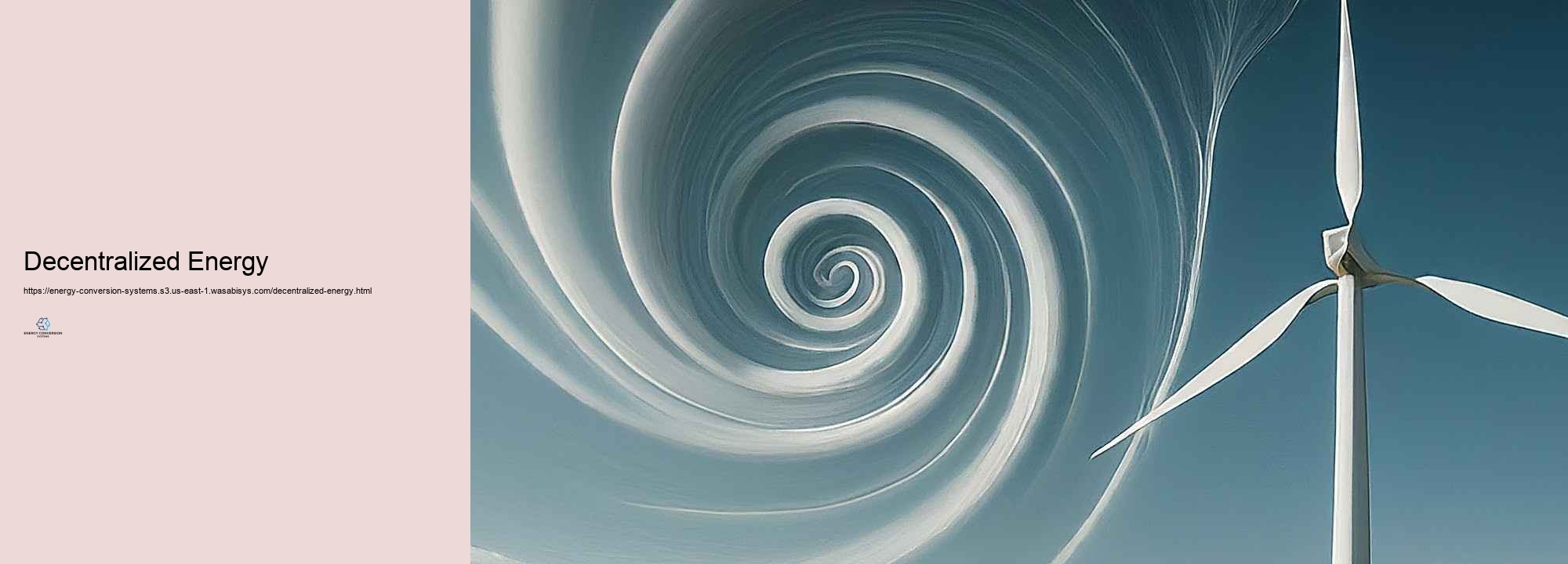
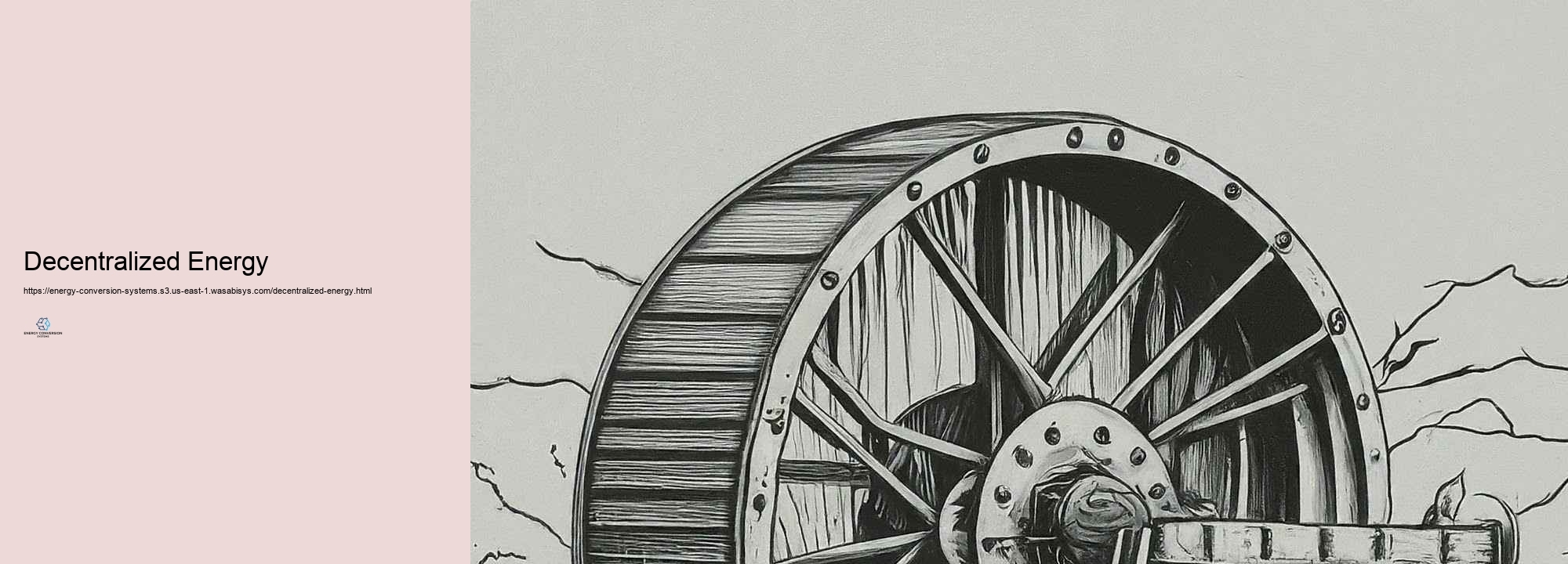
Energy conversion system design is a difficult field that faces various difficulties in the goal for far more effective, lasting, and budget-friendly alternatives. As international energy needs continue to be to rise and ecological fears increase, designers and scientists are left with developing inventive approaches to eliminate these difficulties. This evaluation uncovers the key challenges in energy conversion system design and the occurring options that are forming the future of energy technology. Among the key challenges in energy conversion system layout is improving performance. All energy conversion procedures involve some level of energy loss, as determined by the guidelines of thermodynamics. For thermal systems, such as nuclear power plant, this inefficacy is usually manifested as waste cozy. Managing this difficulty requires a diverse approach. Advanced items that can hold up against higher temperature degrees and stress are being created, making it possible for a lot more effective thermodynamic cycles. For example, supercritical and ultra-supercritical hefty steam cycles in coal-fired nuclear power plant can achieve greater performances by running at remarkably heats and stress. In inner shedding engines, technologies in shedding chamber format, gas shot systems, and exhaust gas recirculation are pressing the boundaries of efficiency. Another significant challenge is the intermittency and irregularity of renewable energy resources. Solar and wind power, while neat and progressively cost-competitive, are not continuously supplied. This irregularity positions obstacles for grid security and stability. Solutions to this challenge contain the growth of sophisticated energy storage space systems, such as grid-scale batteries, pumped hydro storage space, and arising developments like blood circulation batteries. Furthermore, the design of crossbreed systems that incorporate different energy resources (e.g., solar-thermal crossbreed plants) can help alleviate the intermittency problem. Smart grid innovations and need response systems are additionally being produced to better take care of the equilibrium in between variable supply and requirement. Ecological result is an essential factor to take into consideration in energy conversion system style. Reducing exhausts, specifically from fossil fuel-based systems, is a substantial challenge. Solutions include the growth of carbon capture and storage (CCS) developments, which aim to record carbon dioxide exhausts before they enter the setting. Advanced combustion modern technologies, such as oxy-fuel melting and chemical looping shedding, are being examined to assist with a lot more reliable carbon capture. For renewable energy systems, obstacles consist of minimizing the ecological influence of creating procedures and dealing with concerns like wild animals protection in wind ranch design. Scalability and cost-effectiveness existing ongoing obstacles in energy conversion system style.
The impact of energy conversion systems on ecological sustainability is substantial and complex, affecting whatever from greenhouse gas exhausts and resource exhaustion to area health and biodiversity. As the around the world demand for energy remains to climb, driven by population growth and financial development, the demand for lasting energy alternatives ends up being significantly instant. Decentralized Energy Energy conversion systems, which change raw energy sources right into beneficial kinds such as electric energy, heat, and fuel, play a crucial duty in this change. By examining the eco-friendly influences of different energy conversion modern technologies, we can better comprehend their contributions to sustainability and identify pathways for enhancement. Typical energy conversion systems, specifically those relying upon nonrenewable fuel sources such as coal, oil, and natural gas, have generally been considerable factors to ecological deterioration. The burning of these gas launches substantial amounts of carbon dioxide (CO2) and other greenhouse gases right into the environment, driving setting change and its linked affects, such as climbing up around the world temperature levels, sea-level rise, and severe weather condition occasions. In addition, nonrenewable fuel source removal and refining can cause atmosphere damage, dust and water contamination, and air contamination, even more exacerbating ecological obstacles. In contrast, renewable resource conversion systems, such as solar, wind, hydroelectric, and geothermal, give much more lasting alternatives by harnessing all-natural energy circulations that are bountiful and replenishable. These systems generally generate little to no direct emissions throughout treatment, considerably reducing their carbon influence contrasted to fossil fuel-based modern-day technologies. As an instance, solar photovoltaics and wind turbines generate power without melting gas, preventing the launch of co2 and other impurities. Hydroelectric power, while substantially emission-free throughout treatment, need to be thoroughly taken care of to reduce possible environment-friendly effects, such as modifications in water flow and fish activity patterns. The change to renewable resource conversion systems is vital for achieving environmental sustainability, as it align with efforts to reduce greenhouse gas discharges and limitation international warming up. By changing fossil fuel-based systems with renewables, we can lower the concentration of CO2 in the atmosphere, reducing the growth of setting modification and its unsafe effects on ecological communities and human societies. Additionally, renewable resource systems normally call for much less land and water than conventional energy sources, lowering their complete eco-friendly footprint and shielding natural atmospheres. Nevertheless, the implementation of renewable resource conversion systems is not without its difficulties. The manufacturing, installation, and maintenance of these systems can have environmental impacts, including source extraction, waste generation, and land utilize changes. As an example, the manufacturing of photovoltaic or pv panels entails using unusual and limited materials, such as silicon and silver, in addition to potentially unsafe chemicals. Wind wind turbine production requires significant amounts of steel and concrete, and their installation can impact regional wild animals and landscapes. To fix these worries, it is needed to take on lasting practices throughout the lifecycle of renewable energy systems, from design and producing to shutting down and reusing. Energy storage systems, which are important to the efficient combination of renewable energy right into the grid, additionally have environmental implications. Batteries, for example, rely on products like lithium, cobalt, and nickel, the removal and handling of which can cause ecological destruction and social troubles. Developing a lot more lasting battery modern technologies, such as those based upon plentiful and safe products, and boosting reusing treatments are crucial actions towards lowering the ecological influence of energy storage area. Previous tires and source use, energy conversion systems can furthermore affect environmental sustainability with their effects on biodiversity and neighborhoods. Massive energy jobs, whether environment-friendly or fossil-based, can cause setting fragmentation, wild pets variation, and modifications in land use patterns. For example, the building and construction of hydroelectric dams can swamp huge areas of land, disrupting earthbound and marine environments.
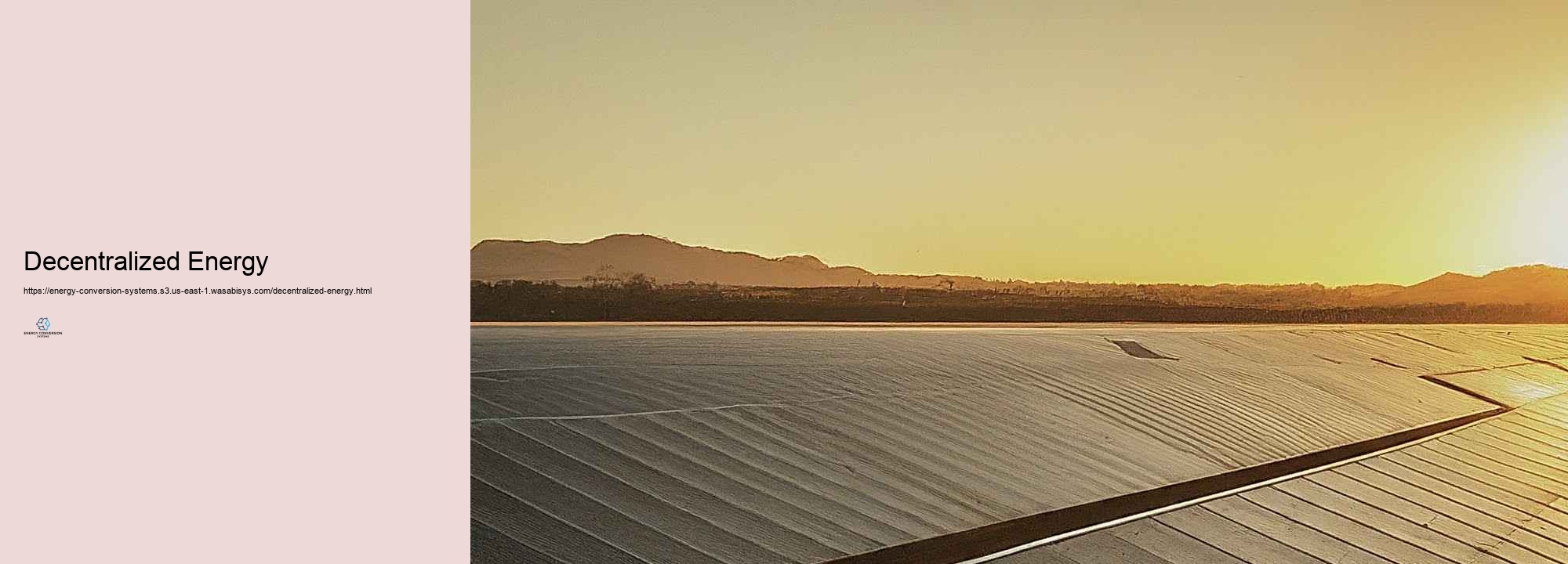
Energy conversion systems are technologies or processes that transform one form of energy into another, such as converting solar energy into electricity or mechanical energy into electrical energy.
Common types of energy conversion systems include solar photovoltaic panels, wind turbines, fuel cells, hydroelectric power systems, and geothermal energy converters.
Energy conversion systems improve efficiency by optimizing the process of converting energy from one form to another, reducing waste, and enhancing the overall output of usable energy.
Energy conversion systems are crucial in renewable energy as they enable the transformation of natural energy sources like sunlight, wind, and water into electricity, supporting sustainable power generation.
Challenges include optimizing efficiency, minimizing energy loss, integrating with existing grids, managing costs, and ensuring reliability and sustainability of the energy sources used.